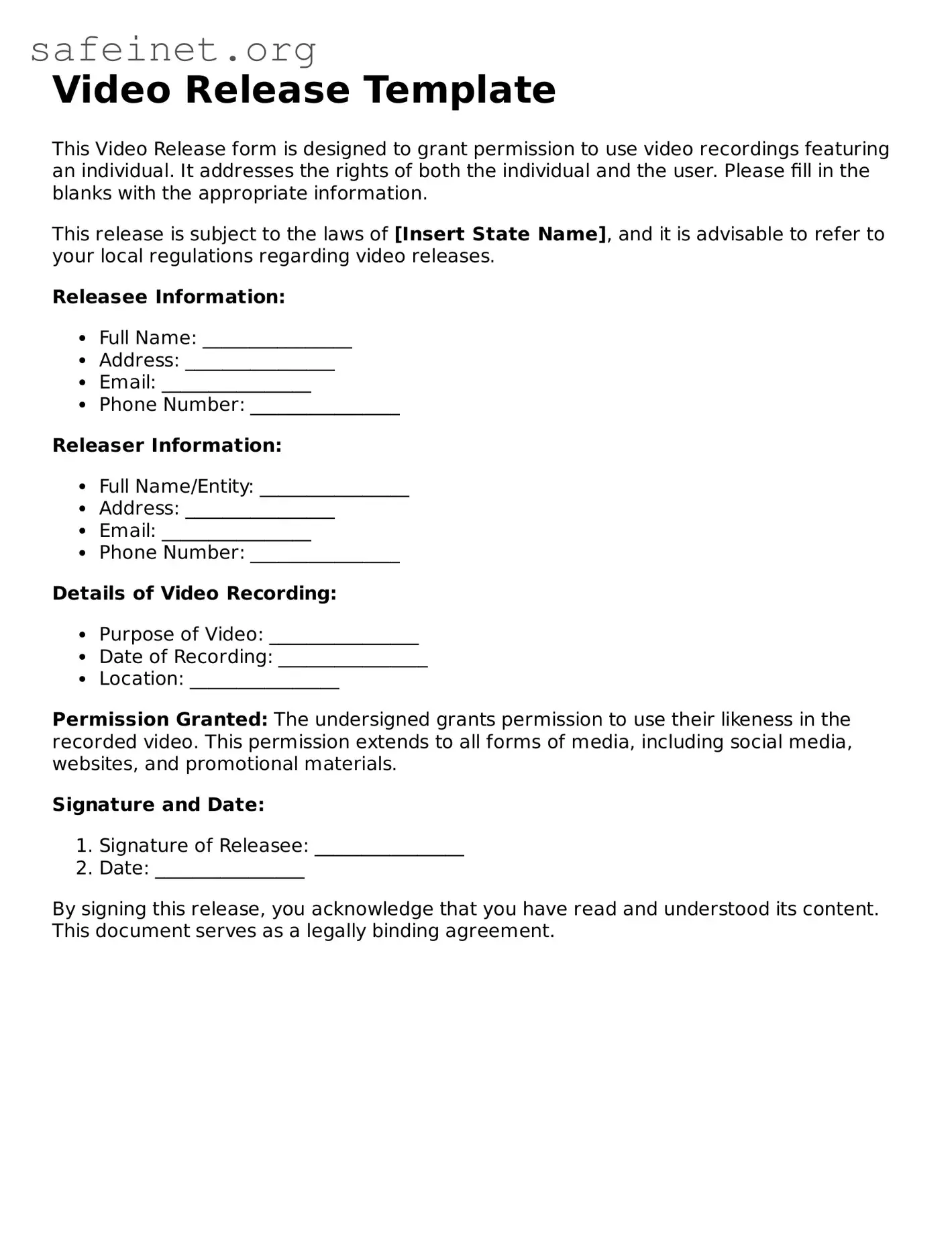What is a Video Release form?
A Video Release form is a document that allows an individual or organization to obtain permission to record, use, and distribute video footage of a person or group. This form helps protect against potential legal issues by ensuring that consent is granted for the use of video material in various contexts, such as promotional materials, advertisements, or social media content.
Who needs to sign a Video Release form?
Typically, anyone who appears in a video that will be distributed publicly should sign a Video Release form. This includes actors, participants in events, or anyone whose likeness may be used in the footage. It's important to get consent from all individuals featured prominently in the video.
Why is a Video Release form important?
This form is crucial for protecting the rights of both the creators and the individuals being filmed. It legally documents consent, which can help prevent disputes over the use of someone’s image or likeness. Without a signed release, you may face legal challenges if the subject does not want their video to be used.
What information is typically included in a Video Release form?
A Video Release form usually includes the subject’s name, contact information, a description of the video project, the intended usage of the video, and any compensation details, if applicable. It should also have space for the subject’s signature and date, acknowledging their agreement.
Can a Video Release form be revoked?
In general, once a Video Release form is signed, it becomes binding. However, if the subject contacts the creator and requests a revocation, the creator can choose to stop using that footage, especially if it hasn’t been publicly distributed yet. Always consult a legal professional for specific advice related to revocation.
Is a verbal agreement sufficient instead of a Video Release form?
No, a verbal agreement is generally not sufficient. A signed Video Release form provides clear, documented consent that can be easily referenced if needed. Relying on verbal agreements can lead to misunderstandings or disputes down the line.
Does a Video Release form protect the creator?
Yes, it provides legal protection to the creator by clarifying that they have permission to use the footage. This release form can defend against claims of unauthorized use of an individual’s likeness or image. It serves as a record of consent.
Are there different types of Video Release forms?
Yes, there are various types of Video Release forms tailored to specific uses. For example, there are forms for commercial use, documentary projects, or social media clips. Depending on the purpose, the details in each form may vary, including the scope of consent and whether any compensation is offered.
What happens if someone refuses to sign a Video Release form?
If someone refuses to sign, you should respect their decision. It's essential to proceed without filming them or use footage of them if it's essential to the project. Alternatively, consider seeking participants who are willing to provide their consent and sign the form.
How long is a Video Release form valid?
The validity of a Video Release form typically does not have a specific expiration date; it remains in effect as long as the creator continues to use the video or a related project. However, it's good practice to check back with subjects periodically, especially if the content usage increases or changes significantly.
